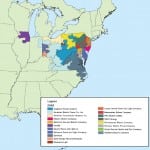
During the past year, the debate over the structure of the nation’s electricity systems has continued at a steady clip. It seems that almost every month a new study or report is issued that proclaims the advantages or disadvantages of one market structure over another. Although a report or study may have value, the Community Power Alliance has found that the value of the vertically integrated structure is best demonstrated by its performance in a number of categories over the long term.
Like the vertically integrated model itself, there is no single characteristic that best demonstrates the worth of full-service utilities. Rather, it is the merging of affordable electricity prices with system redundancies to ensure reliability, the utilities’ investments in new transmission and generation, diversified fuel sources, and quality customer service that together demonstrate why customers continue to benefit from this business model.
Customer benefits
Each day 41 million customers in 34 states who are served by full-service utilities depend on the cost efficiencies created by the full-service, integrated model. A dedicated team of professionals works to ensure that each component—generation, transmission, and delivery—is managed at the lowest cost and in the most efficient way. Regions with full-service utilities continue to experience some of the lowest electricity prices in the country.
These economical prices are, in part, due to the utilities’ diversified fuel sources. Over the years, full-service utilities have invested in a number of different fuel sources: coal, nuclear, wind, hydro, and natural gas. So if one fuel is increasing in price, vertically integrated utilities can look to other types of generation in their portfolios or buy electricity in the wholesale market. Integrated utilities are active participants in wholesale markets and are always looking to find the most economical source of electricity for their customers, whether it be from their own generation fleet or from the competitive wholesale market.
Customers also benefit from full-service utilities’ price structure. Unlike areas of the country with organized markets, traditional, regulated utilities do not tie the price of electricity to the spot market. Electricity prices for customers of vertically integrated providers are based on the actual cost to produce, transmit, and deliver the electricity. This structure helps protect customers against price volatility.
A third reason behind full-service utilities’ affordable prices is their efficient structure. One of the entities weighing in on the electricity debate was the Cato Institute. Its July 2006 report, "Vertical Integration and the Restructuring of the U.S. Electricity Industry," brought to light past economic findings that universally support the efficient structure of traditional utilities. The study showed that "there are substantial economic advantages associated with integration."
In addition to stable and reasonable prices, traditional utilities’ customers also benefit from enhanced reliability, borne out of the integrated model’s structure. Generation, transmission, and distribution are coordinated within a single corporate entity, creating system redundancies that ensure reliable electricity for customers.
Internal affairs
This integrated structure that allows for cost efficiencies and enhanced reliability also plays a large role in system planning. Employees are constantly evaluating the long-term needs of their customers and the area’s growth to ensure that the generation supply and transmission infrastructure are there. In the Southeast region, more utility and competitive generation has been built since 1998 than in any other region, including those with organized markets.
Similar investments in transmission infrastructure are also being made in regions with full-service utilities. The "2004 State of the Markets" report by the Federal Energy Regulatory Commission (FERC) showed that most of the miles of new transmission had been built in vertically integrated regions. The full-service utilities work hand-in-hand with state commissions and other stakeholders in planning for both generation and transmission. This process allows for carefully coordinated investments that minimize costs and impact the high load growth areas.
Validation
Traditional utilities’ constant work to provide economical and reliable electricity for current and future customers has resulted in high marks from their customers. The 2006 J.D. Power Electric Utility Customer Satisfaction survey revealed that 13 of the top 15 companies are vertically integrated; 11 of those 13 operate under the traditional cost-of-service regulation model.
The role of vertically integrated utilities and their ability to continue to serve their customers was validated recently in FERC’s Open Access Transmission Tariff (OATT) reform rule. Proposals to make sweeping structural changes that would have drastically impacted how full-service utilities serve their customers were dismissed. In its response to OATT reform, FERC seemed to understand those provisions’ impact on regulated areas and took a more surgical, measured approach.
As the debate over electricity markets continues in the coming months and, most likely, years, vertically integrated utilities will continue working diligently for their customers, finding savings, planning for the future, and always putting their customers first.
—John B. Breaux is a former U.S. senator and chair of the Community Power Alliance (www.communitypoweralliance.com).










